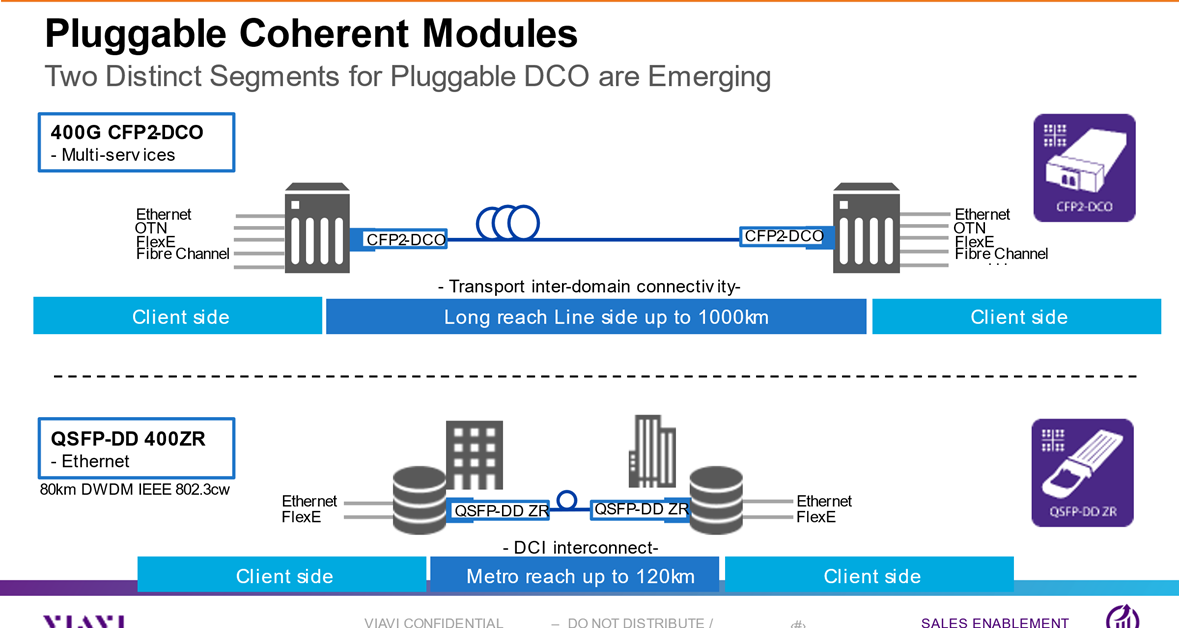400G Pluggable Coherent Modules: Getting Ready for the Real Work

Over the past few months, teams have been very busy developing 400G class pluggable optical modules. Both as QSFP-DD, predominantly for -ZR 80km applications, and CFP2 for full multi-service DWDM.
These coherent modules are a complex mix of photonics, high speed electronics, DSP and firmware as well as mechanical and thermal engineering and we at VIAVI have been deeply engaged with key players – including IC and module vendors–in this early stage. We have also seen some inter-ops between vendors, which helps build confidence in the ecosystem. Moving forward we will start seeing more mature beta sample modules become available to end users. That is where the real work begins and true multi-discipline orchestrated test and measurement is needed to help end users start work on the next level of tasks including module vendor validation, system integration and module command firmware debugging.
This is the real test of “Can we start integration of network elements with these high performance pluggable coherent modules”? Inter-op and operation must work on so many levels including:
- The high-speed electrical interface between host and module – everything from robust signal integrity to correct protocol support, especially around the rich layers of FlexO and other multi-services
- The management interface over the module serial interface. This is far more complex than in the past and has to be done together with the high-speed data – ensuring the module is brought up and conjured in the correct operating mode.
- Stability and performance of key photonic parameters – coherent modules must report far more than the simple optical power levels of client optics – OSNR, EVM, CD and SoP all matter
All of this can only take place in a host test slot that has been designed from the ground up to support coherent modules. The power and cooling at the base level, coupled with the management interface and multi-service high speed host, all must be orchestrated together to make test equipment fit for purpose in the 400G ecosystem.

The ONT DCO has been designed from the ground up. With new hardware optimized for the power and thermal challenges, optimized FPGAs supporting native PAM-4 with all the hooks like deep error analysis and skew to give true root cause analysis of PHY and a breadth and depth of Ethernet and FlexO to support whatever you need for multi-services. But we are not stopping there. As we all gain more experience with the challenges of coherent modules, especially around inter-op and integration, we will keep enhancing these tools to help you get stable and robust products developed.
One key area where we see many challenged is in the module management and control. For this we at VIAVI developed a completely new approach to module command debugging called TraCol. We briefly covered this in the past and I will take a deeper dive in debugging module MIS in a later blog.

Please draw upon the range of resources we at VIAVI can provide for you to help you bring pluggable coherent products to market as part of a stable & robust multi-vendor ecosystem.




